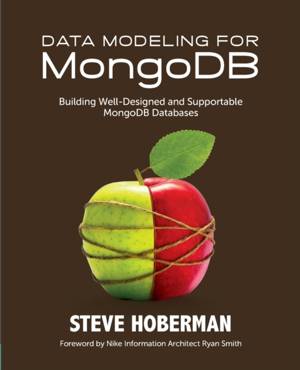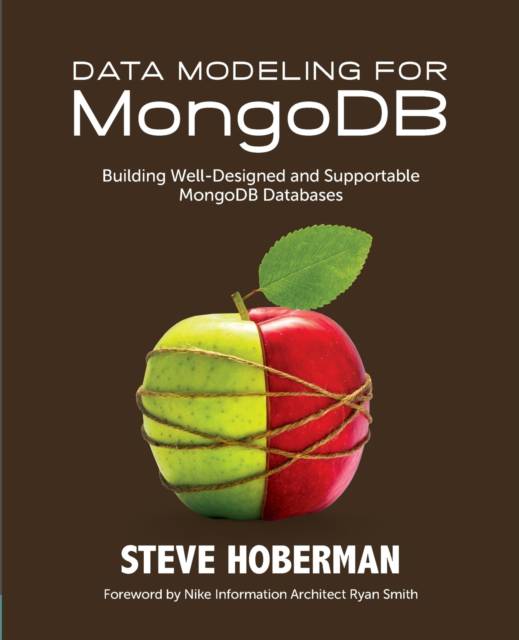
- Afhalen na 1 uur in een winkel met voorraad
- Gratis thuislevering in België vanaf € 30
- Ruim aanbod met 7 miljoen producten
- Afhalen na 1 uur in een winkel met voorraad
- Gratis thuislevering in België vanaf € 30
- Ruim aanbod met 7 miljoen producten
Data Modeling for MongoDB
Building Well-Designed and Supportable MongoDB Databases
Steve HobermanOmschrijving
Master how to data model MongoDB applications.
Congratulations! You completed the MongoDB application within the given tight timeframe and there is a party to celebrate your application's release into production. Although people are congratulating you at the celebration, you are feeling some uneasiness inside. To complete the project on time required making a lot of assumptions about the data, such as what terms meant and how calculations are derived. In addition, the poor documentation about the application will be of limited use to the support team, and not investigating all of the inherent rules in the data may eventually lead to poorly-performing structures in the not-so-distant future.
Now, what if you had a time machine and could go back and read this book. You would learn that even NoSQL databases like MongoDB require some level of data modeling. Data modeling is the process of learning about the data, and regardless of technology, this process must be performed for a successful application. You would learn the value of conceptual, logical, and physical data modeling and how each stage increases our knowledge of the data and reduces assumptions and poor design decisions.
Read this book to learn how to do data modeling for MongoDB applications, and accomplish these five objectives:
- Understand how data modeling contributes to the process of learning about the data, and is, therefore, a required technique, even when the resulting database is not relational. That is, NoSQL does not mean NoDataModeling!
- Know how NoSQL databases differ from traditional relational databases, and where MongoDB fits.
- Explore each MongoDB object and comprehend how each compares to their data modeling and traditional relational database counterparts, and learn the basics of adding, querying, updating, and deleting data in MongoDB.
- Practice a streamlined, template-driven approach to performing conceptual, logical, and physical data modeling. Recognize that data modeling does not always have to lead to traditional data models!
- Distinguish top-down from bottom-up development approaches and complete a top-down case study which ties all of the modeling techniques together.
Specificaties
Betrokkenen
- Auteur(s):
- Uitgeverij:
Inhoud
- Aantal bladzijden:
- 226
- Taal:
- Engels
Eigenschappen
- Productcode (EAN):
- 9781935504702
- Verschijningsdatum:
- 14/06/2014
- Uitvoering:
- Paperback
- Formaat:
- Trade paperback (VS)
- Afmetingen:
- 188 mm x 231 mm
- Gewicht:
- 439 g

Alleen bij Standaard Boekhandel
Beoordelingen
We publiceren alleen reviews die voldoen aan de voorwaarden voor reviews. Bekijk onze voorwaarden voor reviews.











